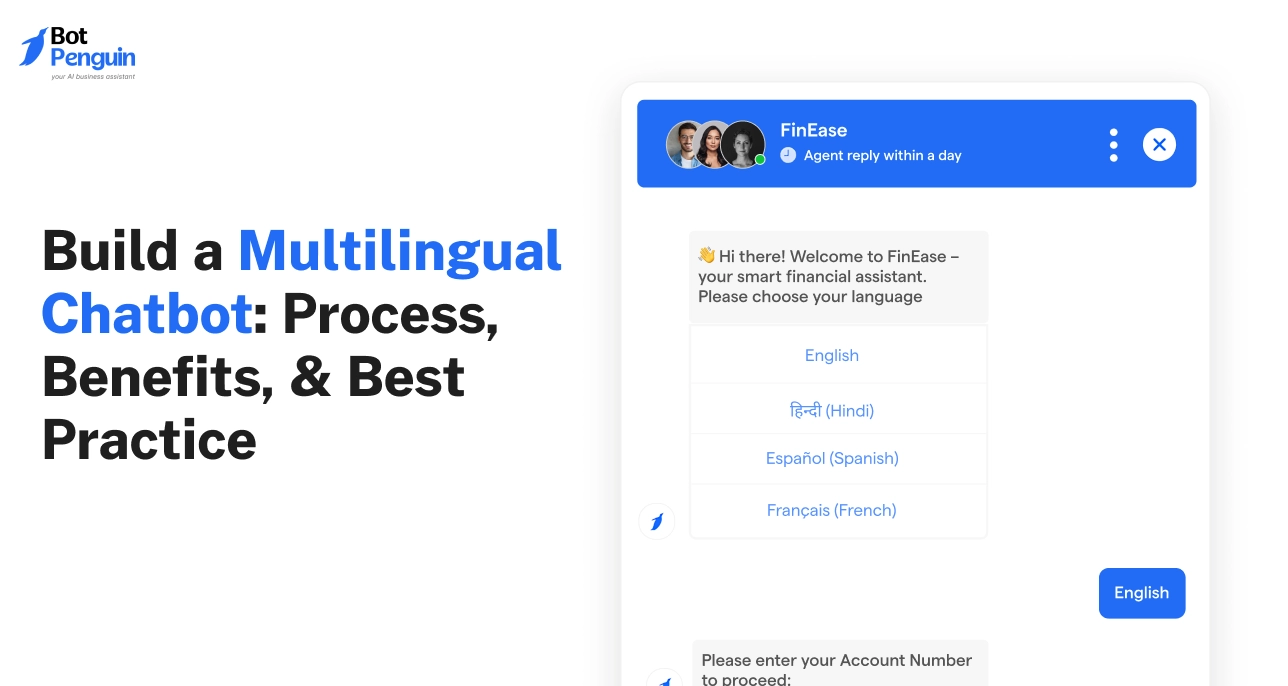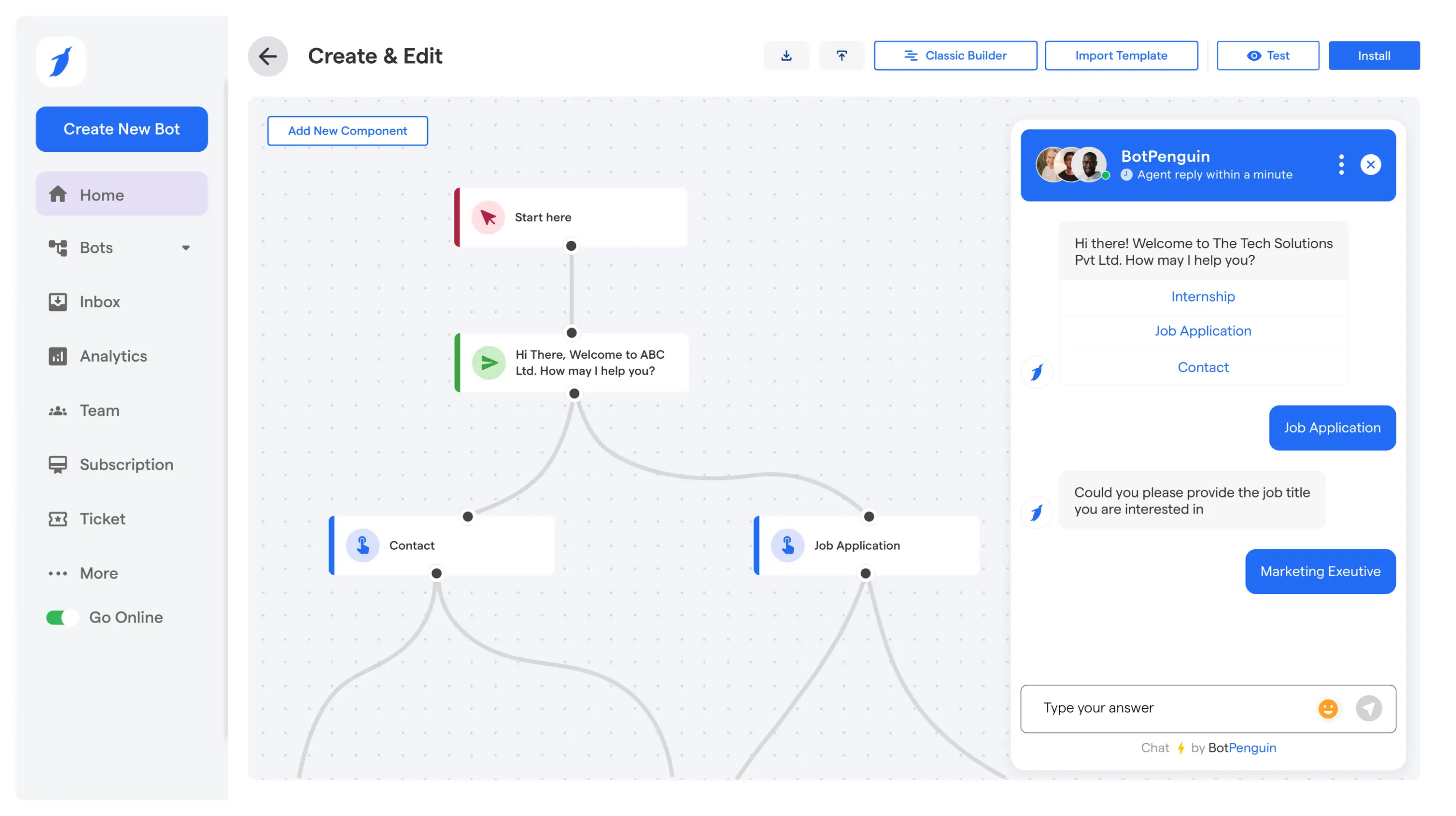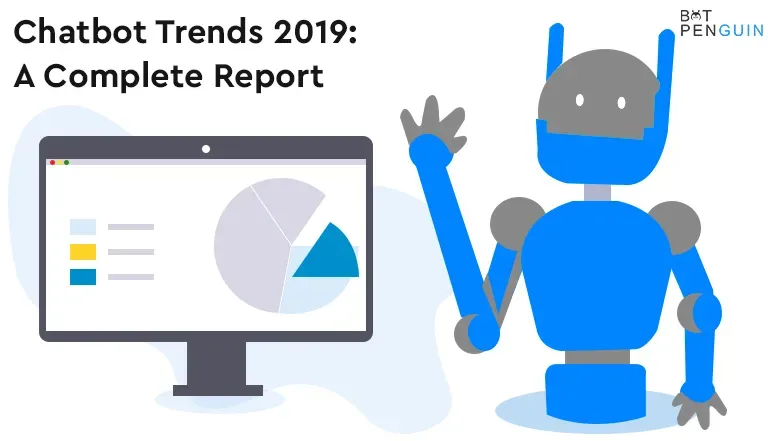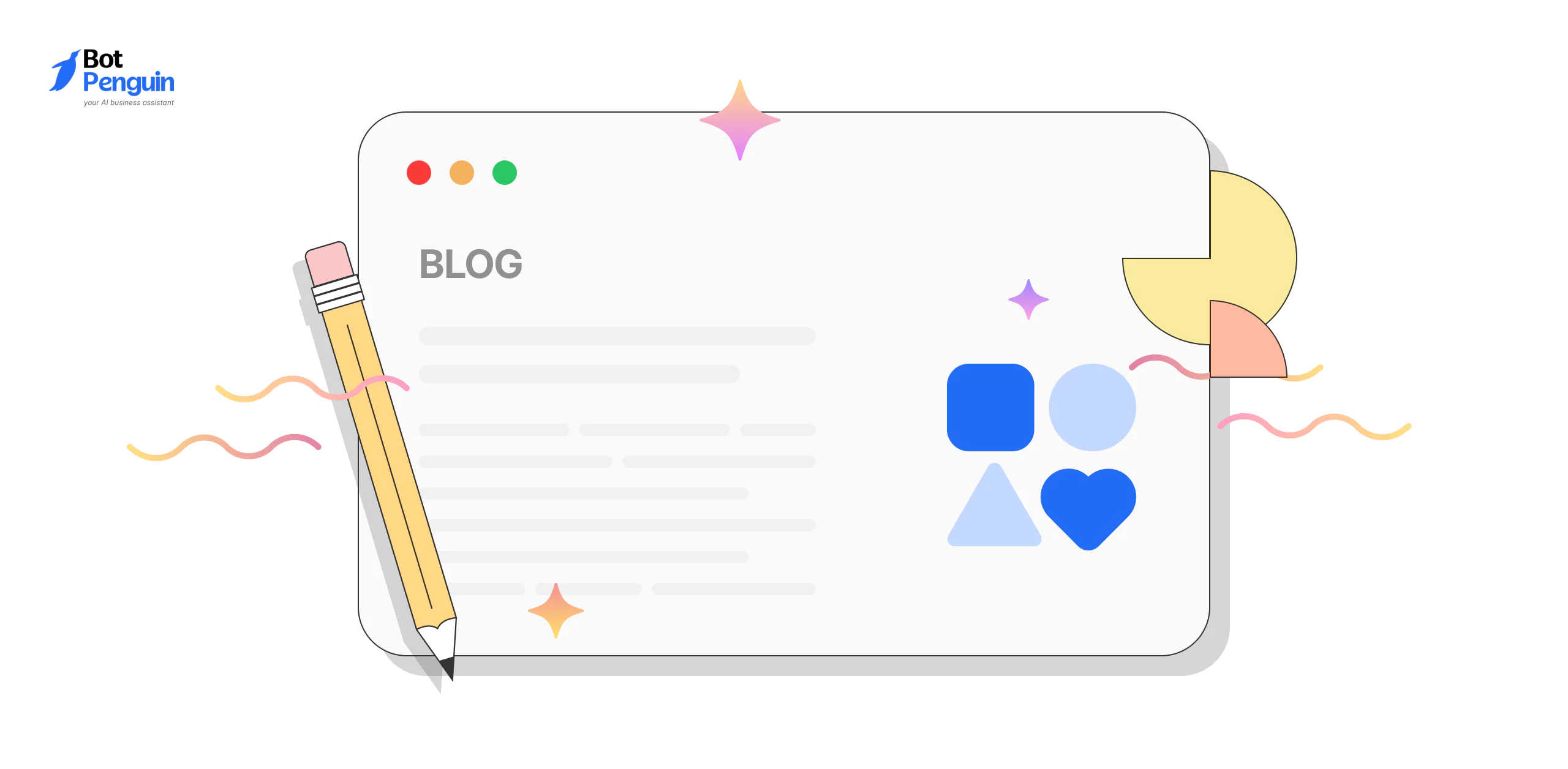Customers today expect brands to speak their language. But many businesses still struggle with language barriers that leave customers confused and disengaged.
The result is lost trust, poor support experiences, and missed sales opportunities.
That’s where multilingual chatbots come in. These AI-driven chatbots can understand and reply in multiple languages, making conversations natural and inclusive.
For global businesses, it’s not just about convenience. It’s about building stronger connections with customers and scaling support without growing costs.
In this guide, you’ll learn how to build a multilingual chatbot, the benefits it brings, and the best practices to make it work well in the real world.
What is a Multilingual Chatbot?
A multilingual chatbot is a chatbot that can hold conversations in more than one language. Unlike a regular chatbot that only works in a single language, it can switch based on the user’s preference.
This makes the conversation natural and removes the feeling of speaking to a machine.
For example, imagine an eCommerce store. A customer in Spain types a question in Spanish. Another customer in India asks the same in Hindi. The same bot responds to both in their own language. This is the power of AI chatbots with multilingual support.
These bots are not limited to simple translation. They use language understanding to answer with context. This means when someone asks in French or Arabic, the reply is accurate and feels human, not robotic. A chatbot multilingual approach works in retail, travel, healthcare, and any business with diverse customers.
In short, a multilingual chatbot is designed to speak the customer’s language and build comfort from the first message. That’s why more businesses are adopting them. And this brings us to the bigger question: why businesses need a multilingual chatbot in the first place.
How to Build a Multilingual Chatbot
Creating a multilingual chatbot may sound technical, but the process is actually simple if you follow the right steps. Here’s a straightforward way to do it:
Step 1: Sign up and create your chatbot
Start by signing up on BotPenguin. Once you log in, you’ll see an option to create a new chatbot.
Choose the platform where you want your bot to work, such as your website, WhatsApp, or Facebook Messenger. Give it a name and create the chatbot.
Step 2: Plan what your bot should do
Before you set up languages, think about why you need the chatbot. Do you want it to handle customer support, answer FAQs, or help with product details?
Write down a list of the main things it should do. This will make the next steps much smoother.
Step 3: Add conversations and FAQs
Now it’s time to teach your bot what to say. Go to the dashboard and add common questions and answers. For example:
- “What are your delivery timings?”
- “How can I track my order?”
You can add as many as you want. The more you add, the smarter your chatbot becomes.
Step 4: Enable multilingual support
Here’s where the magic happens. You don’t need to create a separate chatbot for every language. Once your bot is set up, it automatically understands and replies in the customer’s language.
So if someone types in French, it replies in French. If another user writes in Hindi, it responds in Hindi.
You only need to make sure the content you add is clear, so the chatbot gives accurate answers across different languages.
Step 5: Test your chatbot
Before you launch, test it out. Try chatting with the bot in different languages. You can even ask friends or colleagues who speak other languages to test it.
This helps you spot if something feels off and fix it before going live.
Step 6: Connect with your tools
To make your chatbot truly useful, connect it with the tools you already use. For example, link it with your CRM to fetch order details, or with your email system to collect leads.
This way, when someone asks “Where is my order?” in Spanish, the bot can pull the answer directly and reply in Spanish.
Step 7: Launch and monitor
Once you’re happy with testing, launch the chatbot on your website or chosen platform. After launch, keep an eye on how it performs.
BotPenguin gives you analytics to see what’s working and where people drop off. Update your FAQs or responses from time to time so the chatbot stays sharp.
By following these steps, you’ll have a multilingual chatbot ready to serve people in their own language without needing extra effort or technical knowledge.
Benefits of a Multilingual Chatbot for Businesses
Customers today expect brands to connect with them in their preferred language. A multilingual chatbot does more than translate words. It makes conversations natural, builds trust, and helps businesses grow globally while keeping costs under control.
Here are the major benefits of using a multilingual chatbot:
1. Stronger customer trust and inclusivity
When customers receive replies in their native language, it feels personal and respectful. It shows the brand values their culture and makes them feel included. This level of comfort turns first-time interactions into long-term relationships.
Why it matters: Trust is the foundation of customer loyalty. A customer who feels understood is far more likely to stay with the brand and recommend it to others.
Example: A healthcare provider offering chatbot support in Spanish allows patients to describe symptoms clearly, which builds confidence in the service and makes them more likely to return.
2. Higher conversions and sales
Studies show that 76% of buyers prefer to purchase from businesses that provide information in their native language. Multilingual chatbots remove friction in the buying journey by making every step easy to understand.
Why it matters: Every barrier in communication can lead to lost sales. By speaking the customer’s language, businesses increase their chances of completing transactions.
Example: An eCommerce chatbot that answers questions in French or German can help customers complete checkout smoothly, reducing cart abandonment and increasing revenue.
3. Cost-effective global reach
Expanding into new markets often requires hiring local staff, training, and added infrastructure. A multilingual chatbot allows businesses to serve multiple regions instantly through a single system.
Why it matters: Global expansion becomes faster and more affordable without needing to scale human teams at the same pace as customer demand.
Example: A SaaS startup in the US can serve customers in English, Spanish, and Portuguese through one chatbot, saving the cost of hiring three separate regional teams.
4. Reduced customer support costs
Multilingual staff are expensive to hire and train. A multilingual chatbot can handle routine queries across multiple languages, leaving human agents free for complex or high-value issues.
Why it matters: Lower support costs improve profitability while maintaining customer service quality. Businesses can serve more customers without adding significant overhead.
Example: An airline chatbot that manages booking queries in English, Spanish, and Arabic reduces pressure on call centers, lowering operational costs while improving efficiency.
5. Consistent customer experience
A multilingual chatbot ensures every customer gets quick and accurate responses, no matter the language. This eliminates uneven service levels across regions.
Why it matters: Consistency builds reliability. Customers trust brands that provide the same quality experience everywhere, which protects the brand image.
Example: A global travel company using a chatbot in English, French, and Spanish delivers the same booking support across all regions, ensuring no customer feels overlooked.
6. 24/7 multilingual availability
Chatbots never sleep. A multilingual chatbot can respond in different languages at any time of day, removing time zone limitations.
Why it matters: Customers no longer have to wait for office hours or live agents. Always-on support improves satisfaction and builds stronger relationships.
Example: A banking chatbot that replies in Japanese at midnight and in Arabic a few hours later ensures customers always feel supported, no matter where they are.
7. Competitive advantage in global markets
Many businesses still only offer support in English or one main language. By adopting multilingual chatbots early, companies stand out as inclusive and customer-first.
Why it matters: A clear edge over competitors helps brands win customer trust and expand faster in international markets.
Example: A fintech company offering support in English, Hindi, and Arabic attracts more diverse users than competitors limited to English-only support.
8. Easier compliance and local adaptation
Industries like healthcare, finance, and travel require clear communication to meet regulations. A multilingual chatbot trained with localized FAQs ensures accuracy and adapts to regional requirements.
Why it matters: Miscommunication can lead to compliance failures and legal risks. Multilingual accuracy reduces errors and builds credibility.
Example: A healthcare chatbot that provides prescription instructions in Arabic helps patients follow treatment properly and keeps providers compliant with safety regulations.
9. Stronger brand image
Brands that offer multilingual support appear global, inclusive, and professional. Customers associate these businesses with accessibility and reliability.
Why it matters: A strong brand image improves recognition and attracts more loyal customers across markets.
Example: A university chatbot that answers admission queries in English, Mandarin, and Arabic builds a reputation as an international, student-friendly institution.
10. Scalability without complexity
A multilingual chatbot can grow with the business. New languages can be added easily as the customer base expands, without the need to rebuild systems.
Why it matters: Scaling becomes simpler and more cost-efficient. Businesses can expand into new regions without major operational changes.
Example: An eCommerce chatbot that begins with English and Spanish can later add Italian and Portuguese as the store expands into new regions, all while using the same platform.
The benefits of a multilingual chatbot are clear. They build trust, increase sales, cut costs, expand reach, and strengthen brand reputation.
In today’s global market, businesses that create multilingual chatbots are better prepared to connect with customers everywhere while keeping operations simple and efficient.
Best Practices for Multilingual Chatbots
The benefits of multilingual chatbots are clear: they expand your reach, improve customer satisfaction, and make your brand more inclusive.
In fact, a CSA Research study found that 76% of online customers prefer to buy products with information in their native language, and 40% will not purchase at all if support is not offered in their language.
But building a multilingual chatbot isn’t as simple as translating words. Many fail because they rely on direct translations or ignore cultural nuances, which leads to awkward or robotic conversations.
To make your chatbot feel natural and engaging in any language, follow these best practices:
1. Use NLP instead of direct translation
Literal translations often miss the meaning behind user intent. Natural Language Processing (NLP) helps your chatbot understand context, tone, and cultural variations.
- Example: The phrase “What’s up?” in English is a casual greeting. A direct translation into French (“Qu’est-ce qui est en haut ?”) sounds odd. An NLP-powered bot interprets the intent and responds with a natural French equivalent, like “Ça va ?”.
- Actionable Insight: Invest in AI chatbots with multilingual support that process user intent rather than word-for-word text. Train them on real-world conversations to ensure responses feel human and context-aware.
2. Provide easy language switching
Customers shouldn’t feel “stuck” in one language after choosing it at the start of a conversation. Flexibility boosts user comfort and reduces drop-offs.
- Example: A German shopper browsing in English might switch mid-conversation to German when discussing payment terms. If your chatbot allows seamless switching, it keeps the flow natural.
- Actionable Insight: Add a visible “Change Language” option or a simple command trigger like “Switch to Spanish”. This small feature improves user retention significantly.
3. Add fallback to human agents
Even the most advanced bots cannot handle every complex query. Offering a human backup, especially in the customer’s preferred language, shows reliability and care.
- Example: A patient asking in-depth questions about side effects in Spanish may need to be connected with a Spanish-speaking healthcare agent if the bot cannot provide accurate medical details.
- Actionable Insight: Define clear handover triggers—such as repeated failed responses, sentiment analysis detecting frustration, or complex domain-specific queries. This ensures smooth customer experience without dead ends.
4. Train with localized FAQs and context
Language is not only about grammar but also about culture. FAQs, slang, and payment terms differ across regions, so training data must reflect local usage.
- Example: In India, “COD” (Cash on Delivery) is a standard query. In the U.S., customers are more likely to ask about “PayPal” or “Apple Pay.” If your chatbot isn’t localized, it risks confusing or frustrating users.
- Actionable Insight: Build region-specific datasets by analyzing local customer service tickets, FAQs, and popular queries. This ensures your bot speaks like a local, not an outsider.
5. Track performance by language
Launching multilingual support is only half the work—you need to measure effectiveness. Analytics by language can highlight where improvements are needed.
- Example: If Spanish users often drop off mid-conversation while English users don’t, it signals gaps in Spanish training. Similarly, high error rates in French queries might suggest poor intent recognition.
- Actionable Insight: Use KPIs like average conversation length, resolution rate, fallback frequency, and customer satisfaction scores—segmented by language. Continuously retrain your chatbot on weak areas.
Following these practices ensures your chatbot doesn’t just “speak” multiple languages but communicates naturally, respects cultural nuances, and builds trust across regions.
A well-built multilingual chatbot feels like a real conversation partner—whether it’s answering a shopper in Tokyo, a patient in Mexico, or a customer in Berlin.
Common Challenges & How to Overcome Them
Even with best practices in place, building a chatbot multilingual experience comes with hurdles. Businesses often face issues around accuracy, cost, and trust.
These challenges can make teams hesitant to adopt multilingual chatbot solutions. Addressing them early helps ensure smooth deployment and long-term success.
1. Dialects and slang
Languages change across regions. A Spanish user in Mexico might use words that differ from a Spanish user in Spain. If the chatbot fails to pick up these differences, conversations can feel robotic.
The solution is to retrain the bot with regional data and regularly update FAQs with local slang.
Why it’s concerning: Poor handling of dialects makes users feel misunderstood and reduces trust in the chatbot.
2. Integration complexity
A multilingual chatbot works best when connected to systems like CRM, WhatsApp, or websites. But integration can feel technical and time-consuming.
Platforms with plug-and-play options, like BotPenguin, simplify this step. Instead of custom coding, businesses can connect tools directly and focus on conversations.
Why it’s concerning: Without proper integration, the chatbot feels disconnected and cannot provide smooth customer journeys.
3. Budget concerns
Many teams worry about high setup costs. The truth is, you don’t need to start with ten languages at once. Begin with the top two or three based on your audience.
As the chatbot proves useful, add more languages gradually. This step-by-step approach makes scaling affordable.
Why it’s concerning: High upfront costs can block businesses from even starting with multilingual chatbot solutions.
4. Customer trust
If a chatbot gives wrong answers or mistranslates, users may lose confidence. To prevent this, test conversations thoroughly before going live. Involving native speakers during pilot runs helps catch errors early and builds reliability.
Why it’s concerning: A single wrong response in a customer’s native language can damage credibility and push them away.
By addressing these challenges, companies reduce risks and build confidence in their multilingual chatbot solutions. The next section shows how different industries are already using these chatbots in real-world scenarios.
Real-World Use Cases
The challenges of building a chatbot multilingual experience highlight why businesses need proven applications.
Seeing how different industries use multilingual chatbot solutions makes the benefits more concrete. These examples show where the technology is already creating value and where it can grow further.
eCommerce
Online stores serve shoppers from many countries. A multilingual chatbot helps customers browse, ask product questions, and track deliveries in their own language.
Example: Zara’s chatbot in Europe allows customers to check order status in English, Spanish, or German, ensuring smoother shopping experiences.
Travel
Booking flights or hotels often involves multiple languages. A travel company can use a chatbot that switches from English to French or Japanese, depending on the traveler.
Example: KLM Airlines uses multilingual chatbots to confirm bookings and share flight details across multiple European and Asian languages.
Healthcare
Patients often hesitate to share health concerns if they are not understood. A multilingual chatbot can guide them through appointment booking, prescription reminders, or symptom checks in their native language.
Example: Babylon Health offers multilingual support, helping patients from diverse regions consult doctors and access basic healthcare guidance.
Education
Universities attract students worldwide. Chatbots that answer queries in multiple languages help students with admissions, course details, and campus information.
Example: The University of Melbourne chatbot answers application-related queries in Mandarin and English, helping international students feel supported.
Nonprofits
Global organizations need to reach communities across borders. A nonprofit chatbot use case might include donation drives, community awareness, or volunteer coordination.
Multilingual support ensures no group feels excluded.
Example: UNICEF uses chatbots in multiple languages to share health campaigns and collect feedback from different communities.
These examples show the multilingual chatbot advantages across sectors, proving their impact is not limited to one industry. As adoption grows, the future promises even more advanced applications.
That’s what we explore next: how AI is shaping the future of multilingual chatbots.
Future of Multilingual Chatbots
The role of multilingual chatbots is no longer limited to customer support. They are shaping how brands build trust, scale globally, and connect with audiences on a personal level.
The future lies in making these conversations feel effortless, natural, and human. Businesses that prepare now will stay ahead as customer expectations continue to rise.
Generative AI makes conversations human-like
Future chatbots will go beyond word-for-word translations. With generative AI, they will understand cultural nuances, tone, and context.
This means conversations will sound less robotic and more like talking to a native speaker. Misinterpretations will drop, and trust will grow naturally.
Voice-enabled interactions are next
Typing is fast, but speaking is faster. The next big step is combining chatbots with voice technology. A multilingual AI chatbot will soon answer in both text and voice, breaking barriers for people who prefer talking in their own language.
This will matter most in industries like healthcare and travel, where clarity and speed are critical.
Learning in real time improves accuracy
Future systems will learn with every customer exchange. Instead of waiting for manual updates, chatbots will automatically adapt to new phrases, slang, or trending queries.
This ability to learn on the go will ensure that businesses always stay relevant in how they communicate.
From customer service to brand ambassadors
Chatbots will evolve from reactive tools to proactive brand voices. With AI chatbots with multilingual support, companies can represent themselves globally with one consistent identity.
Customers will recognize the brand’s tone, whether they engage in English, Spanish, or Arabic. This shift will make multilingual chatbots true global ambassadors.
The future is about more than translation. It’s about building trust at scale. Businesses that act early won’t just serve more customers; they’ll create stronger bonds across cultures.
In the next section, we’ll tie everything together and show why taking the first step now sets you up for long-term success.
Conclusion
Multilingual chatbots are no longer a nice-to-have. They are becoming essential for businesses that want to grow across borders and serve diverse audiences with confidence.
What started as basic translation has now evolved into intelligent, context-aware interactions powered by AI.
We walked through the process of building them, explored their benefits, and saw best practices to avoid common pitfalls. From handling dialects to integrating seamlessly into existing systems, every step plays a role in shaping a reliable customer experience.
The advantages of multilingual chatbots are clear: wider reach, better trust, and stronger customer bonds.
For businesses, the smartest way forward is to begin small. Start with two or three key languages that match your audience. As your reach grows, you can expand gradually, training the chatbot to handle more regions and contexts. This phased approach ensures both cost control and long-term success.
Platforms like BotPenguin make this journey easier. With built-in AI, integrations, and cost-efficient plans, you can set up a multilingual AI chatbot without worrying about technical hurdles. It’s about getting started quickly while keeping room to scale.
Global communication is moving fast, and multilingual chatbots will lead this shift. By acting today, you prepare your brand to serve tomorrow’s global customers with ease.
Frequently Asked Questions (FAQs)
How do multilingual chatbot solutions improve customer satisfaction?
Multilingual chatbot solutions help customers interact in their native language, reducing misunderstandings and building trust. This improves satisfaction, loyalty, and overall user experience across different regions.
What are the main advantages of using a multilingual AI chatbot in business?
A multilingual AI chatbot increases reach, reduces language barriers, and ensures consistent communication. Businesses gain stronger engagement, faster response times, and better conversions when supporting customers in multiple languages.
Can a chatbot multilingual system handle regional dialects?
Yes, a chatbot multilingual system can be trained with localized data. This helps it understand dialects and slang, ensuring responses feel natural and relevant for regional audiences.
Are there cost-effective multilingual chatbot solutions for small businesses?
Yes, small businesses can start with limited languages and scale gradually. Affordable multilingual chatbot solutions allow cost efficiency while offering professional support in essential languages.
How does BotPenguin simplify creating AI chatbots with multilingual support?
BotPenguin simplifies building AI chatbots with multilingual support through plug-and-play integrations, AI-driven translations, and cost-efficient pricing. It enables small and large businesses to go global without technical complexity.




